Mesoamerica is a term used to describe the region roughly corresponding to modern day Mexico and Central America which was inhabited by various societies before Spanish colonization following the famous discovery by Christopher Columbus. The Aztec Empire was a triple alliance between the city states of Tenochtitlan, Texcoco and Tlacopan which dominated most of central Mexico as well as other territories in Mesoamerica from early 14th century till the Spanish conquest in 1521. The term Aztec is at times used to refer to the Nahuatl-speaking people of central Mexico. More specifically it describes the Mexica people, who build Tenochtitlan, the capital city of the Aztec Empire while some also include the inhabitants of its allies: the Acolhuas of Texcoco and the Tepanecs of Tlacopan. Know about the Aztec origin, rulers, conquests, religion and human sacrifice; as well as the rise and fall of their empire, through these 10 interesting facts.
#1 THEY WERE BANISHED TO AN ISLAND AFTER THEY SACRIFICED THE DAUGHTER OF A KING
Aztlan is a legendary place, the location of which has not yet been identified. The Aztec people refer to Aztlan as their ancestral home. In Nahuatl, the language spoken by the Aztecs, the word Aztecah means “people from Aztlan” and that is from where the Aztecs get their popular name. The Mexica people were the last of Aztlan migrants to arrive in the Valley of Mexico around the year 1250 AD. The king of the city-state Colhuacan allowed them to settle in a place called Chapultepec. He later wanted to marry one of his daughters to a Mexica and appoint her to rule over their tribe. However, the Mexica instead sacrificed her to their patron god Huitzilopochtli and flayed her skin. Enraged, the king drove them out of his region. They were forced into an island in Lake Texcoco, a swampy region which no one had yet inhabited due to its difficult geography. There the Mexica people, or the Aztecs, saw an eagle nested on a nopal cactus which they interpreted as a sign from their God to build their city on that location. They called it Tenochtitlan.
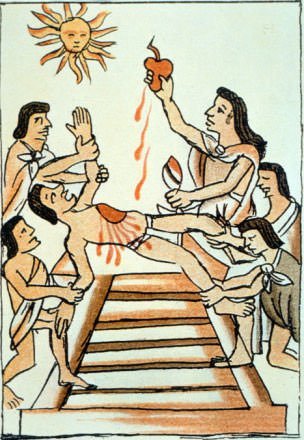
#2 THEY BUILD THE MARVELOUS CITY TENOCHTITLAN ON ONE OF THE MOST DIFFICULT TERRAINS
When the Aztecs founded the city of Tenochtitlan, it was a small swampy island in Lake Texcoco in the Valley of Mexico. They faced many challenges like creating a strong foundation for their buildings in the swampy land, bringing clean water to the city, connecting their city to the mainland, protecting it against floods and producing food for its rising population. However, despite these challenges, the Aztecs build on that location one of the greatest cities of the time. At its peak, Tenochtitlan was the largest city in the Pre-Columbian Americas. It covered an estimated area of 8 to 13.5 km2 and had an estimated population between 200,000 and 300,000. It held twice the population of London or Rome and was one of the largest cities in the world. When the Spanish arrived at Tenochtitlan, they were so mesmerized by its streets, causeways, canals, aqueducts, marketplaces, palaces and temples that they doubted whether it was real or were they in a dream.
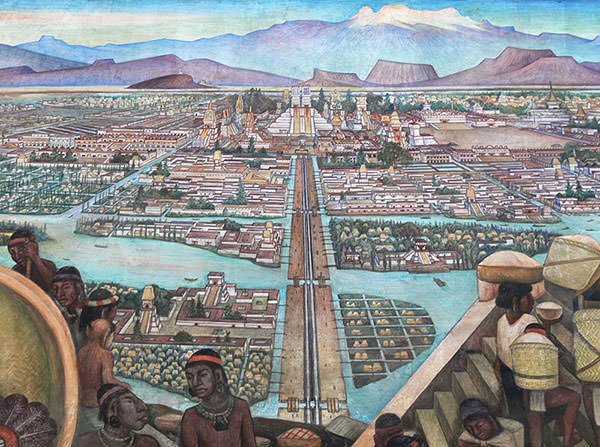
#3 THE AZTECS BUILT ONE OF THE LARGEST AND MOST POWERFUL EMPIRES IN MESOAMERICA
The Mexica founded the city of Tenochtitlan in 1325 AD. Initially it allied with and paid tribute to Azcapotzalco, the capital city of the Tepanec empire. In 1426, the Azcapotzalco king arranged the assassination of the Mexica ruler. The following year Tenochtitlan allied with the city-states of Texcoco, Tlacopan and Huexotzinco to wage war against Azcapotzalco. They emerged victorious in 1428. After the war, Huexotzinco withdrew. The other three city-states formed the Triple Alliance, with Tenochtitlan soon becoming the dominant power. The alliance waged wars of conquest and expanded rapidly after its formation. At its height, the Triple Alliance or the Aztec Empire controlled most of central Mexico as well as other territories. It covered 80,000 square miles and contained 25 million people in almost 500 towns and cities. It was one of the largest and most powerful empires in the history of Mesoamerica.
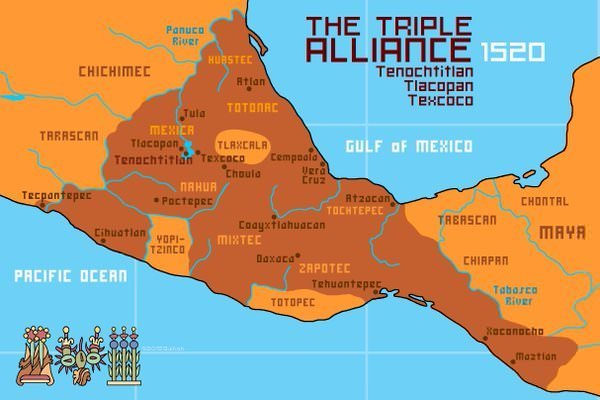
#4 THE AZTEC EMPIRE WAS AN INFORMAL EMPIRE WHICH RULED BY INDIRECT MEANS
Unlike European empires, the Aztec Empire ruled by indirect means and it didn’t claim supreme authority over the tributary provinces. The Aztecs left the local rulers of the conquered city states in power as long as they agreed to pay semi-annual tribute and supplied military forces to wage war when needed by the empire. There were two types of provinces in the empire: Strategic provinces, which aided the Aztec state with mutual consent and Tributary provinces, in which the obligations were mandatory rather than consensual. The provincial tribute system was overseen and coordinated not by the king but a separate official called the petlacalcatl. At the provincial level, the collection of tribute was overseen by an official called huecalpixque, whose authority extended over the lower-ranking calpixque.

#5 THE AZTEC EMPEROR WAS KNOWN AS THE HUEY TLATOANI OR THE GREAT SPEAKER
A ruler in the Aztec empire was called Tlatoani (“the one who speaks”). The city-states of the Aztec empire each had their own Tlatoani. The Mexica ruler of the Aztec Empire who governed from Tenochtitlan was called Huey Tlatoani (“great speaker”). The management of tribute, war, diplomacy and expansion were all under the purview of the Huey Tlatoani. While Huey Tlatoani was the ultimate authority and the external leader, there was also an internal ruler called Cihuacoatl (“female twin”), whose primary role was to to govern the city of Tenochtitlan. The Cihuacoatl was always a close relative of the Huey Tlatoani. Both these positions were not priestly but they did perform important ritual tasks. The Aztec Empire also had a four-member military and advisory Council which assisted the emperor in decision-making. The four members of the Council also served as military generals. At the time of succession, the emperor could only be selected from this Council. This was done to contain ambition among the nobility.
#6 PERHAPS THE GREATEST AZTEC EMPEROR WAS AHUITZOTL
There were a total of 11 Huey Tlatoani during the 145 year reign of the Aztec Empire. Acamapichtli founded the Aztec imperial dynasty in 1375. Their fourth emperor Itzcoatl (r. 1428 – 1440) defeated the Tepanec empire and laid the foundation of the Triple Alliance. He was succeeded by Moctezuma I (r. 1440 – 1469) who consolidated the empire and organized the construction of the famous double aqueduct which supplied Tenochtitlan with fresh water. The Aztec Empire expanded rapidly under the leadership of their eighth ruler Ahuitzotl (r. 1486 – 1502), who is considered by many as the greatest military leader of Mesoamerica. His conquests opened up routes to the coastal areas leading to expansion of trade, and prosperity. He also oversaw many construction projects. The reign of Ahuitzotl was a golden era for the empire. The Aztec Empire reached its greatest extent under the reign of his successor Moctezuma II (r. 1502 – 1520), who was the ruler when the Spanish arrived in 1519. The last Aztec emperor was Cuauhtémoc, who was captured by the Spanish in 1521.
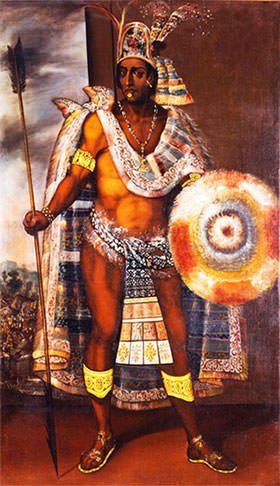
#7 THE SPANISH WERE INITIALLY WELCOMED BY MOCTEZUMA II
Hernán Cortés, a Spanish conquistador, arrived at Yucatán in present day Mexico in early 1519. He led a contingent of 11 ships carrying around 630 men. He used the strategy to pit native people against each other to conquer the region. After defeating the Tlaxacan and Cholula warriors by allying with other natives, he reached Tenochtitlan on November 8, 1519. The Aztec king of Tenochtitlan, Moctezuma II, welcomed Cortes and allowed him to stay in his city. After around six weeks, Cortes used an incident in which two Spaniards were killed as a pretext to take Moctezuma hostage. Cortes then ruled the city indirectly for several months. On May 20, 1520, the Spaniards under Pedro de Alvarado attacked unarmed Aztec nobles congregated at the Festival of Toxcatl and slaughtered thousands, including much of the leadership of Tenochtitlan. This led to a revolt in Tenochtitlan in which Moctezuma II was killed; and Cortes and his men were forced to leave the city.

#8 MOST OF THE AZTEC POPULATION WAS WIPED OUT FOLLOWING THE SPANISH CONQUEST
After the revolt in Tenochtitlan, a smallpox outbreak hit the city killing more than 50% of the region’s population. After allying with or defeating the cities under Aztec control, Cortes began a siege of Tenochtitlan a year later. In May 1591, he attacked the city with 600 Spaniards and more than 50,000 warriors of native tribes. After a hard fought battle, Tenochtitlan fell on August 13, 1521 with its emperor Cuauhtémoc being captured. Subsequently, the Valley of Mexico was hit with two more epidemics, smallpox (1545–1548) and typhus (1576–1581), which wiped out more than 80% of the indigenous population of the region. Mexico City was built on the ruins of Tenochtitlan. A majority of modern day Mexicans are mestizos, a term used to describe a person of combined European and indigenous descent. The central emblem in the Mexican flag is based on the Aztec symbol for Tenochtitlan, the sight which inspired them to build their great city there. The Nahuatl language is still spoken by around 1.5 million people, mostly in the mountainous regions of Mexico.
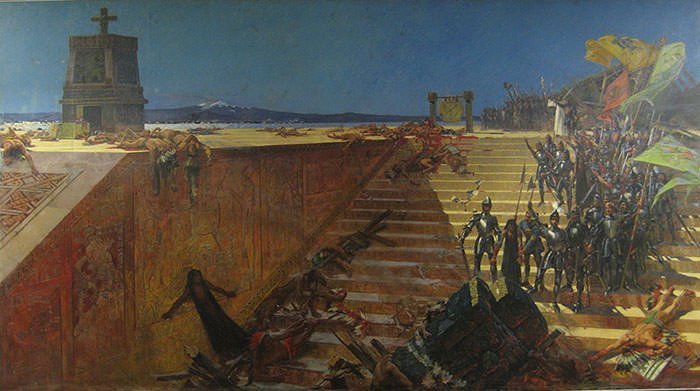
#9 CORTES WAS AIDED IN DEFEATING THE AZTECS BY A NATIVE WOMAN NAMED LA MALINCHE
In April 1519, the Spanish defeated the natives of the Chontal Maya of Potonchán, who in turn gave them 20 slave women among whom was a woman named La Malinche. She spoke two native languages, Mayan and Nahuatl. She soon learned Spanish and served as a translator for Cortes. Later, she became a mistress to Cortes and gave birth to his first son, Martin. La Malinche played a critical role in the Spanish conquest of the Aztec civilization. Apart from serving as an adviser and interpreter of Cortes, she played an important role in diplomacy helping the Spanish ally with the native tribes. Among other things, she warned Cortes of a native plan to destroy his small army leading to slaughter of the plotting tribe. One source even says that Cortes himself said that after God, Malinche was the main reason for his success. Due to her, the term “malinchist” applies to all those who feel an attraction to foreign cultures and disregard for their own national culture. Today, La Malinche is seen by some as a woman caught in between two cultures and a mother of a new race; while others regard her as a traitor who brought the end of her own civilization.
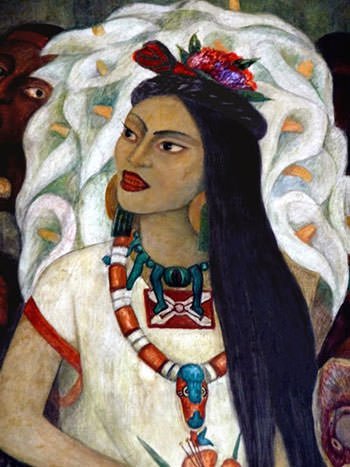
#10 AZTEC RELIGION WAS POLYTHEISTIC
The Aztec religion was polytheistic and involved a large and ever increasing pantheon of gods and goddesses. The Aztecs often adopted gods from different cultures and allowed them to be worshiped as part of their pantheon. The most important celestial entities in Aztec religion were the Sun, the Moon, and the planet Venus. The patron god of the Mexica tribe of Tenochtitlan was the Sun god Huitzilopochtli who represented war and sacrifice. Other important gods included Tlaloc, supreme god of the rain and by extension a god of earthly fertility and of water; Tezcatlipoca, associated with a wide range of concepts; and Quetzalcoatl (“feathered serpent”), the god of wind, sky and star who was associated with learning. Religion was part of all levels of Aztec society with each level having their own rituals and deities. The word for priest in Nahuatl was tlamacazqui which meant “giver of things”. His main duty was to make sure that the gods were given their due in the form of offerings, ceremonies and sacrifices.

AZTEC HUMAN SACRIFICE
The Aztecs believed that continuing sacrifice of the gods sustained the Universe. Human sacrifice was considered the highest offering to the Gods to repay their debt and it was a major part of their religion. In their ritual, the person to be sacrificed was taken to the top of the temple. He was then laid on a stone slab by four priests, and his abdomen was sliced open by a fifth priest with a ceremonial knife. The cut was made in the abdomen and went through the diaphragm. The priest would then grab the heart and tear it out, still beating. It would be placed in a bowl held by a statue of the honored god, and the body thrown down the temple’s stairs. During the ritual, the priests and the audience would stab, pierce and bleed themselves as auto-sacrifice. Their is debate about the extent and reasons of human sacrifice among the Aztecs. It is generally believed that it was practiced on a large scale. Apart from religious reasons, it is theorized that public spectacle of sacrificing warriors from conquered states was a major display of political power and a way to deter future rebellions.

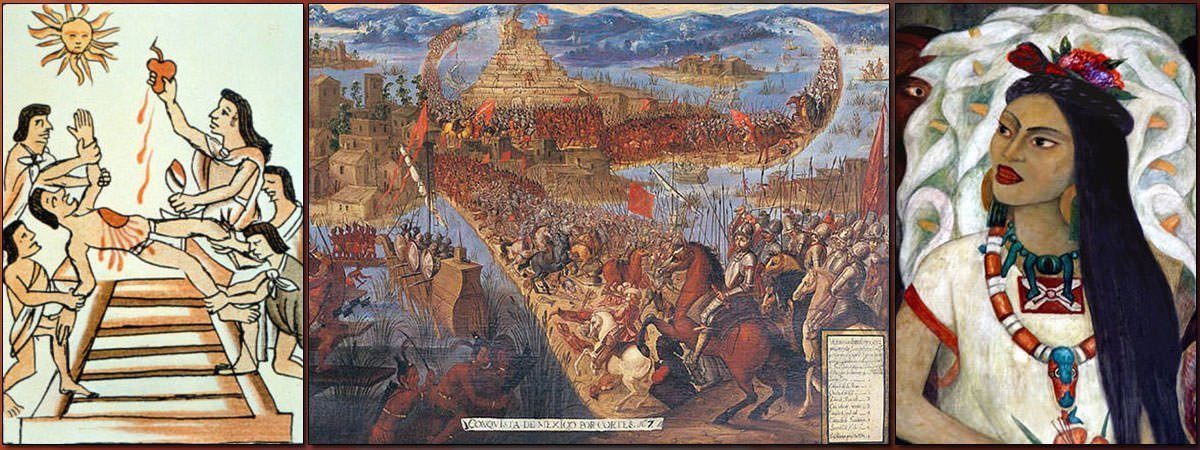
Thanks for revealing to me i have always been a malinchist now i’ve read this information
it has less information it needs to have more information
thanks for all this information,
You’re welcome